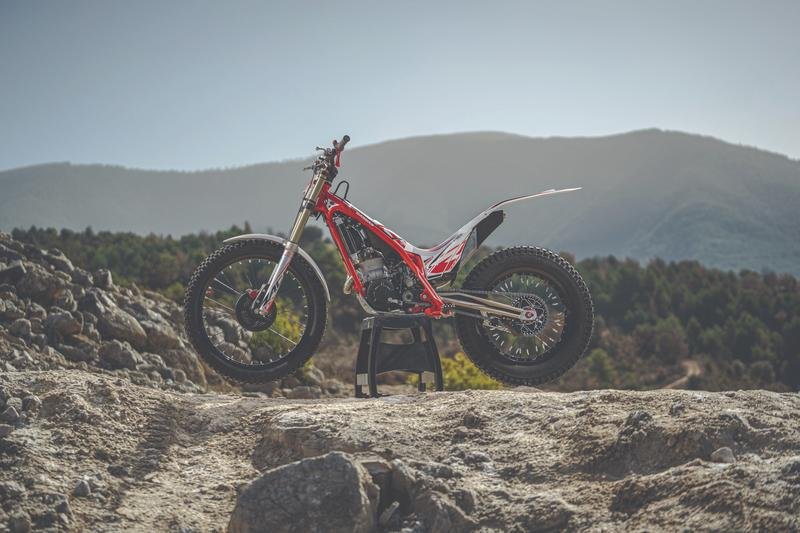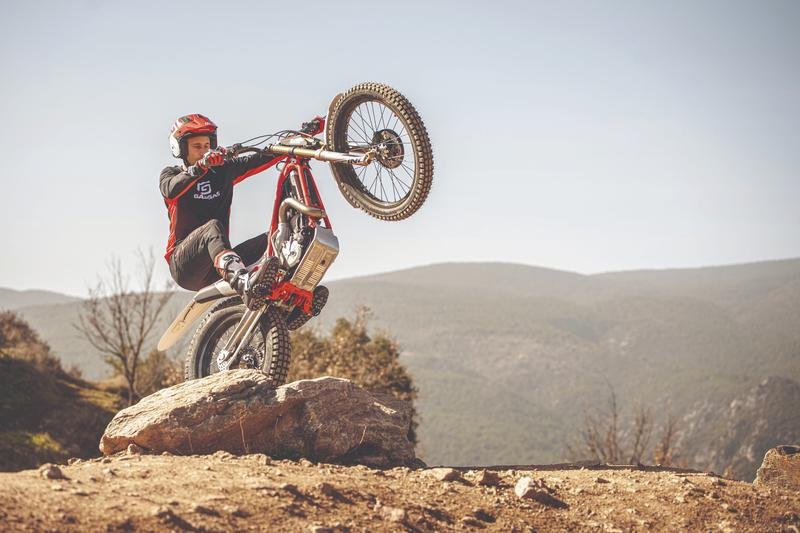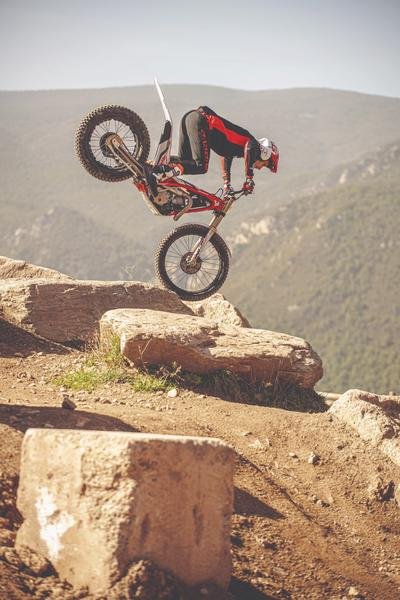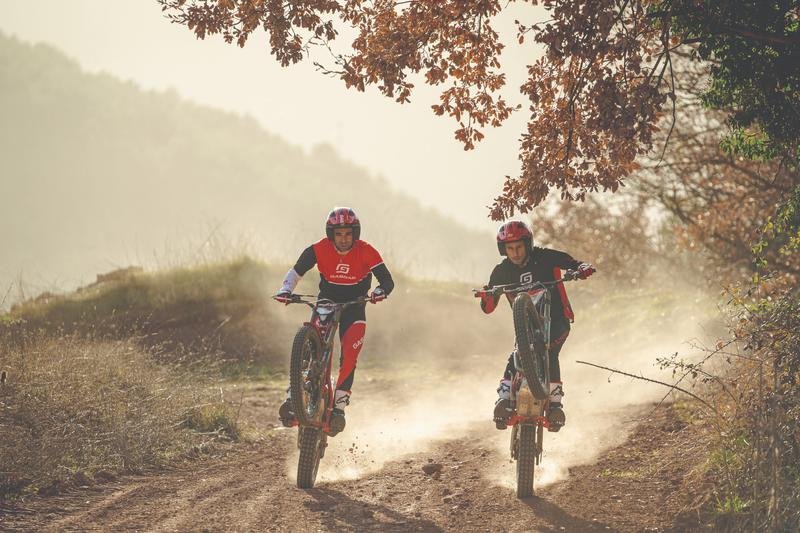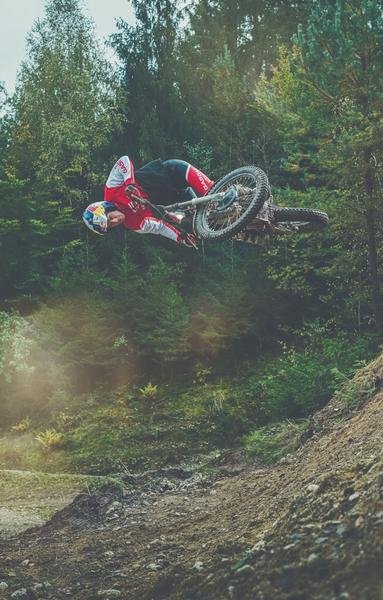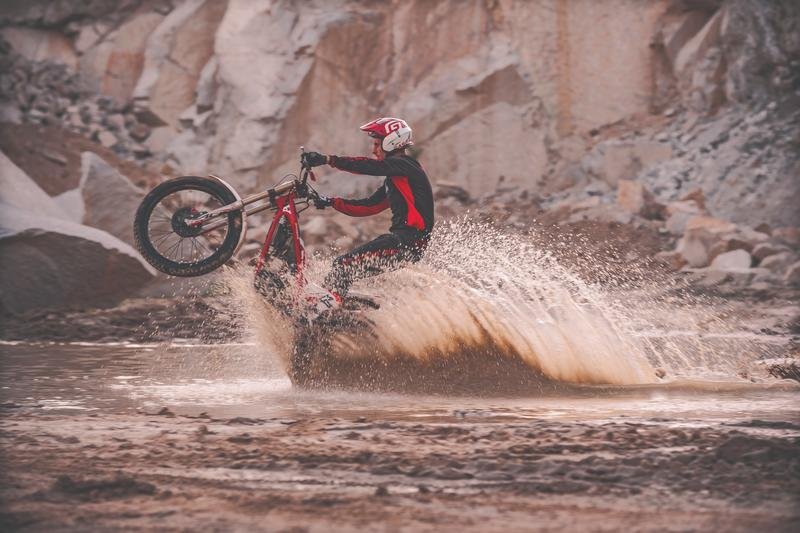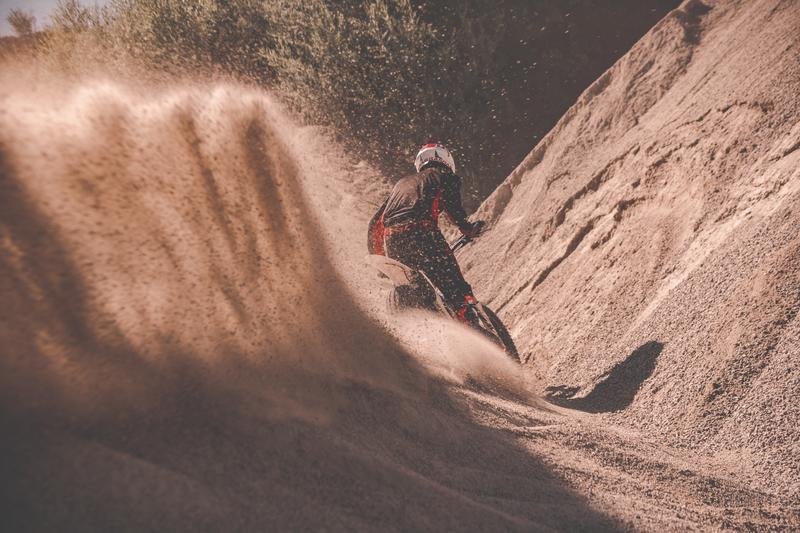

2020 GasGas TXT Racing 250 review: A Spanish-Austrian Relationship
|
As many are probably aware, the Spanish motorcycle company GasGas was acquired by the Pierer Mobility group at the end of last year. Pierer Mobility is the owner of KTM and Husqvarna, as well as a strategic partner of Indian company Bajaj Auto, a world leader in motorcycle manufacturing. While Enduro bikes and future GasGas MX bikes will use the same platform as current KTM and Husqvarna bikes, the 2020 GasGas Trials bikes retain the Spanish design, and that's a good thing. The change in ownership, however, resulted in the consolidation of GasGas' test range. For 2020, GasGas has offered the TXT Racing trials bike in four different displacements: 125, 250, 280 and 300. All share the same chassis and, with the exception of the 125's smallest cylinder, they look the same in appearance. . The 2020 GasGas TXT Racing 250 is probably the best option for most beginner to intermediate riders. Experienced trial riders won't need any introduction to the TXT or its components, which are fairly standard for all trial bikes. The Braktec calipers and hydraulics, Michelin Trial Competition X11 radial tubeless rear tyre, Keihin 28mm PWK carburettor, Tech 39mm fork and Öhlins shock absorber are top of the line. As an expert rider, I wasn't sure if I should take the perspective of an experienced trials rider or view the TXT Racing 250 as a mid-level dirt bike rider would. I'll try to approach it from both angles, and those in between. Having competed on a GasGas TXT Racing 300 in the Expert class of the NATC/AMA USA National Championship MotoTrials Series last season, I am very familiar with GasGas trials bikes and how they work. Thanks to this experience, I felt comfortable on the TXT Racing 250 as soon as I put my foot in the stirrups. GasGas offers stable and easy-to-handle trial bikes, with a slightly steeper front end than competing models. GasGas also seems to be a bit easier to balance due to its front end geometry. However, the downside is that this model has one of the widest turning radii of any range. Ergonomically, the GasGas has taller footpegs than some other models, as well as lower handlebars. Although you might think it's aimed at smaller riders, I'm very comfortable on this 1.80m bike. The handlebar clamps on the TXT Racing 250 can be swapped and moved forward, although I prefer them in their stock position, with the handlebars angled slightly forward. In fact, the only personal adjustments I made to the stock setup was to tweak the lever position to my liking. The suspension is excellent on both sides. The Tech fork is a little firm at first, but slacks off quickly. The Öhlins V2 shock absorbs small obstacles with ease, without unbalancing the chassis and letting the Michelin radial gain grip. In addition, the suspension is very dynamic, which allows you to gain height without making the bike feverish. For stronger riders in the higher categories, the suspension is a bit soft for big obstacles. Optional stiffer springs can help solve this problem. The oversized 248cc two-stroke engine is smooth and easy to ride, revving fast and topped out high. The stock setting is nice and clean—the only adjustment we made was a slight turn of the air screw for optimal performance in local conditions. There are two modes with a button near the steering head: Sun and Rain. Sun mode was everyone's favorite, as we didn't use it in rainy weather. In Sun mode, the engine runs a bit more cleanly and reaches higher revs. As a National expert rider, I lacked the torque of a 300 for heavier obstacles and had to really rev the Gas Gas TXT Racing 250 to get to what I wanted. Local class riders will have no problem with the power – it is more than adequate throughout the rev range. The gear ratio is a bit high, as I prefer to ride in 2nd gear. The 39t rear sprocket is a bit small, so a 42 would put it in the right range for me. Local riders typically use first gear, and the gearing is perfect for that use. The six-speed gearbox has the first four gears close together for rolling in competitive sections, while the 5th and 6th are meant to roll in a loop when transferring between sections. Having been in tracked trials across the country, I know how beneficial it is to have a six-speed transmission. On loose, slippery, or wet climbs, having that fourth gear can be very advantageous over a five-speed gearbox that only offers three gears for sections. Shifting is a bit sluggish, even for a trials bike. Another unique feature that GasGas has offered for many years is the diaphragm clutch—something coincidentally found on KTMs and Husqvarnas as well. The feel on the TXT Racing 250 is different than standard disc and plate clutches; it features a progressive action that facilitates a smooth ride. This greatly helps beginners and learning pilots. Riders switching from one competing brand to another will take a while to adapt, while riders new to trials won't notice the difference. For experienced riders who rev their bike full throttle to clear larger obstacles, the clutch doesn't tend to creep or slap like it does. Braktec brakes are the standard in the trials industry. They provide a strong bite and a nice firm feel. If you are new to trials, be careful not to drag the brakes downhill. Small rotors and master cylinders heat up and weaken quickly. For normal trials riding, this is never a problem. The engine start is different due to the style of the kickstart gears. Drivers unfamiliar with it may find it difficult to start the engine at first. Once acclimatized, there are no starting problems. After spending a lot of time on the new 2020 GasGas TXT Racing 250 and looking at it in detail, it's obvious that this bike is all GasGas. Although assembled under the new Austrian owner, the motorcycle, still Spanish, does not present any significant changes at this stage. The good news for trial riders and future trial riders is that the dealer network for GasGas motorcycles has just expanded considerably. |
|
2020 GasGas TXT Racing 250 Specifications MOTOR Type: Single cylinder two-stroke Cylinder: 248cc Bore x Stroke: 72.5 x 60mm Start: Pedal stroke Fuel supply: Keihin PWK 28mm carburetor Lubrication: Premix, 80:1 Transmission: 6 speed Clutch: Diaphragm with hydraulic actuation Final drive: 5/8 x 1/4″ chain FRAME Frame: Tubular chromoly steel with hollow aluminum swingarm Front suspension; Travel: Tech 39mm fork with adjustable spring preload and rebound, butted; 7.0 inch Rear suspension; Travel: Öhlins V2 shock with spring preload and rebound adjust, linkage mounted; 6.5 inches. Rims: Aluminum spoke rims Front wheel: 21 x 1.60 Rear wheel: 18 x 2.15 Front Tire: 2.75x21; Michelin Trial Competition with bias-ply inner tube. Rear tire: 4.00 x 18; Michelin Trial X11 tubeless radial Front brake: 185mm NG Wave floating disc with Braktec 4-piston monobloc caliper Rear brake: NG Wave 150mm disc with 2-piston Braktec caliper DIMENSIONS and CAPACITIES Wheelbase: 52 inches Seat height: 24.8 inches Fuel Capacity: 2.5 quarts Empty weight: 152 lbs |

